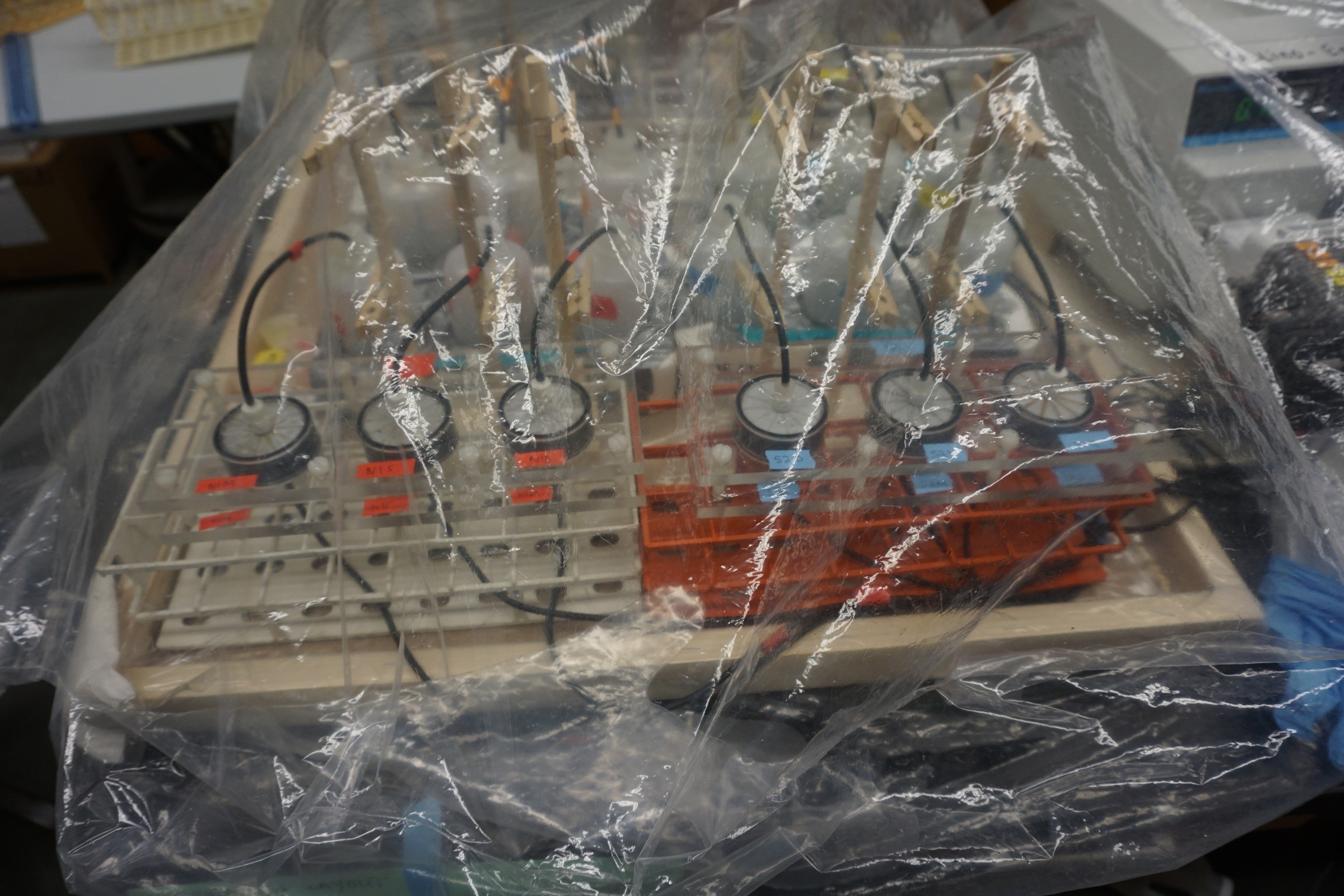Understanding salt marsh sediment decomposition rates and pathways in response to nitrate addition
 |
| Example of experiment setup with flow through reactors filled with marsh sediment. |
Salt marshes provide a number of critical ecosystem services, such as shoreline protection, nutrient filtration, and support of marine and coastal food webs. Of particular importance is the ability of their organic rich sediments to sequester carbon from the atmosphere that could otherwise worsen climate change, a recent mitigation strategy termed "blue carbon." Despite the wide range of ecosystem services provided by salt marshes, various human and climate-driven processes threaten their ability to persist. Increased nitrogen inputs from fertilizer and wastewater effluent is arguably one of the more prominent threats to coastal systems, yet it is unclear how salt marshes will respond to these changes. Researchers from the TIDE project, spearheaded by Linda Deegan, set out to answer this question by adding nitrogen-based fertilizer at the ecosystem scale for over a decade. They found that creek banks in the fertilized creek were beginning to slump, and hypothesized that this was due to decreased belowground plant biomass and increased bacterial respiration at depth (Deegan et al. 2012).
To more closely address this question, graduate student Ashley Bulseco-McKim’s research in collaboration with Anne Giblin uses controlled laboratory experiments to investigate the effect of nitrate addition on organic matter decomposition via microbial respiration, at different depths within the salt marsh sediment. Preliminary analyses indicate a significant increase in microbial respiration with the addition of nitrate, with the most pronounced effects in deep sediments ranging from 100 to 150 years old. This is significant because carbon at this depth is typically thought to be more resistant to microbial degradation. These results suggest that there is a pool of carbon that microbes can use in the presence of nitrate, but that is left behind when nitrate is limiting, such as in areas that do not experience high nitrogen inputs. Future work will further explore these questions by using sediments from areas with varying nitrate exposure, and by running experiments in both oxygenated and anoxic environments. This project is funded by a grant to Jennifer Bowen from the National Science Foundation (DEB 1353140), to Anne Giblin from WHOI Sea Grant (NA140AR4170074 , Project R/M-65s) and to Ashley Bulseco-McKim from the Ford Foundation.